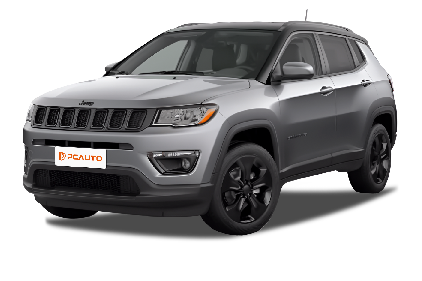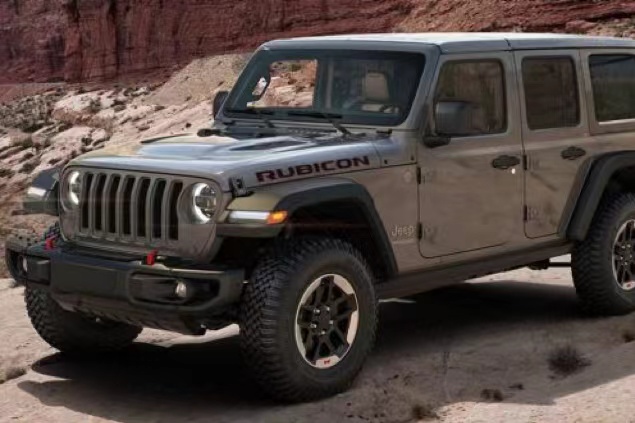Q
Where is the Jeep Compass manufactured?
The Jeep Compass sold in Malaysia is primarily manufactured at the FCA plant in Pune, India, operated by Stellantis Group. This SUV adopts a global production model, with different versions previously assembled in locations like Mexico and Brazil besides India. The Malaysian-spec Compass is imported as completely built units (CBU) with no current plans for local complete knock-down (CKD) assembly.
Notably, Jeep has been speeding up its expansion in automobile markets of Southeast Asian in recent years. Consequently, the Compass models available to Malaysia are suitable for tropical climate, including enhanced air conditioning systems and heat-resistant materials. Although imported, the vehicles are supported by Jeep's official dealer network in Malaysia, which provides comprehensive after-sales service and a five-year warranty to ensure proper maintenance.
For consumers considering locally assembled alternatives in the same segment, the Proton X70 or Mitsubishi Outlander are also good choices.
Special Disclaimer: This content is published by users and does not represent the views or position of PCauto.
Related Q&A
Q
Is the Jeep Compass engine powerful?
The Jeep Compass 2.4 Limited (2014) is equipped with a 2.4L naturally aspirated inline-four engine that delivers 172 horsepower at 6000 rpm and a peak torque of 224 Nm at 4400 rpm. Whether an engine is powerful enough depends on individual needs and expectations. For urban commuting and light off-road driving, this engine provides adequate power for smooth acceleration and overtaking. It is paired with an automatic transmission and an all-wheel drive system, ensuring stable performance across various road conditions. However, if you seek high-performance driving with rapid acceleration and high top speeds, this engine may not meet those expectations. Overall, it strikes a good balance between daily usability and light adventure capabilities.
Q
What is the maximum range of the Jeep Compass?
The Jeep Compass 2.4 Limited (2014) has a fuel tank capacity of 51 liters. However, its maximum range depends on various factors such as driving habits, road conditions, and vehicle load. With a 51-liter fuel tank, under ideal conditions with efficient driving, it can achieve a long range, but the actual range often varies. For example, if the vehicle averages around 10 liters per 100 kilometers (this is just an estimate as actual consumption may differ), it could travel approximately 510 kilometers on a full tank. Regular maintenance like proper tire inflation, timely oil changes, and efficient engine tuning can also improve fuel efficiency and increase the maximum range. Keep in mind these are approximations and the actual maximum range may fluctuate.
Q
How much does it cost to fill up Jeep Compass?
The Jeep Compass has a fuel tank capacity of 51 liters. However, the actual cost to fill it up depends on current fuel prices. Gasoline prices fluctuate - taking standard RON 95 as an example, if its price is RM 2.20 per liter, a full tank would cost approximately RM 112.20. For RON 97 priced at RM 2.50 per liter, filling the tank would require RM 127.50.
Fuel consumption varies significantly based on driving habits and road conditions. Proper driving habits and favorable road conditions can improve fuel efficiency, reducing refueling frequency and costs. Conversely, aggressive driving and challenging terrain increase fuel consumption, leading to higher refueling expenses.
Q
Does Jeep Compass have a spacious room?
The room of Jeep Compass is spacious. With a length of 4404mm, width of 1760mm, height of 1656mm and wheelbase of 2634mm, it provides an ample space inside. The five-seat layout means there's enough room for a small family. The front seats offer manual adjustability for the driver and passenger, and the passenger seat has features like tumble-fold and heating. The rear seats can be split 60:40, which not only gives flexibility for seating arrangements but also allows for more cargo space when needed. The trunk has a volume of 458L, which is sufficient for daily groceries or a couple of suitcases for a short trip. Also, features like a single sunroof increases the sense of spaciousness and airiness inside the vehicle, making the Jeep Compass a good choice for those seeking a vehicle with adequate space.
Q
Is the Jeep Compass SUV or XUV?
The Jeep Compass is a compact SUV that has the typical features of an SUV. It has elevated ground clearance that enables it to easily handle challenging terrains with better passability than conventional sedans. Its interior offers adequate space, providing ample room for both passengers and cargo to meet the consumers' needs for daily commutes and family travel.
In design, it carries forward Jeep's iconic DNA with the classic seven-slot grille paired with distinctive headlights, complemented by muscular body lines. For the hood, it offers a range of powertrain options including gasoline engines, as well as electrified variants like mild-hybrid, plug-in hybrid, and all-electric versions to cater to consumers'diverse preferences.
Some models are equipped with an intelligent 4WD system, delivering off-road performance—all of which align with authentic SUV traits rather than the XUV.
Q
What type of vehicle is the Jeep Compass?
The Jeep Compass is a compact SUV that belongs to the Jeep family. With a body length of 4,404mm, width of 1,760mm, height of 1,656mm, and a wheelbase of 2,634mm, its dimensions secure its position in the compact SUV segment. For the hood, it once offered a 2.4L naturally aspirated engine version producing 172PS maximum horsepower, sufficient for daily driving needs.
In terms of features, the vehicle is equipped with numerous practical and comfort-oriented configurations. In safety, it includes six standard airbags, electronic stability control, hill start assist, etc. The front seats offer manual adjustment, supporting heating functionality, while the rear seats feature a 60:40 split-folding capability for flexible cargo space expansion. Additionally, the multifunction steering wheel and 6.5-inch touchscreen infotainment system further enhance the driving experience.
With these characteristics, the Jeep Compass is suitable for both daily commutes and outdoor adventures, which is a good choice for consumers.
Q
How far can an empty-fuel Jeep Compass travel?
It's difficult to determine exactly how far an empty-fuel Jeep Compass can travel, as this depends on various factors like driving style, road conditions, and vehicle load. The 2014 Jeep Compass 2.4 Limited has a 51-liter fuel tank, with actual fuel consumption varying between drivers - typically ranging from 11 to 15 liters per 100 kilometers.
Assuming approximately 10 liters of fuel remain when the warning light activates (this is a rough estimate and varies by vehicle), at a consumption rate of 12 liters per 100 km, the theoretical remaining range would be around 80 kilometers. However, this is only an estimate. In practice, to avoid potential fuel pump overheating damage because of insufficient cooling, which may even cause the breakdown of vehicle, it's strongly recommended to refuel the vehicle as soon as possible after the warning light illuminates.
Q
Which country does Jeep Compass come from?
The Jeep Compass is an American brand. Jeep is an automotive brand with a profound historical heritage and is affiliated with Chrysler Corporation in the United States. This brand is renowned worldwide for producing off-road vehicles with outstanding performance. As a member of the Jeep family, the Jeep Compass inherits the brand's unique features. It combines classic design with modern technology, featuring iconic exterior elements of the Jeep brand such as the seven-slot grille and a series of advanced configurations, such as the available Freedom Drive active full-time 4WD system, which enhances its on-road stability and off-road capability. In Malaysia, many consumers favor the Jeep Compass, as it offers unique and distinctive options for local SUV buyers.
Q
What is the fuel capacity of Jeep Compass?
The fuel capacity of the Jeep Compass is 51 liters, which helps improve the driving range. The fuel tank capacity refers to the volume from the bottom of the fuel tank to the safe fill level. In actual refueling, it may exceed the calibrated value because there is still space from the safe fill level to the fuel tank opening, which is to prevent fuel overflow due to thermal expansion. This vehicle runs on gasoline, and its fuel consumption per 100 kilometers fluctuates within a certain range. Understanding the fuel capacity is important for trip planning. For example, before a long-distance trip, check the remaining fuel level and plan refueling stops in advance. During daily use, it is also recommended to monitor the remaining fuel level through the vehicle's fuel gauge and refuel the vehicle promptly when the level is low to avoid travel disruption due to fuel depletion.
Q
Is Jeep Compass the full-size car?
Jeep Compass is not the full size car. It is a compact SUV, categorized into the C-Segment. With a length of 4404mm (for the 2014 model) and a wheelbase of 2634mm, its dimensions make it a compact vehicle. Full size cars or SUVs typically have larger dimensions, offering more spacious interior, especially in terms of passenger room and cargo capacity. However, over the years, the Compass has undergone upgrades. The newer versions have increased in size, with a length reaching 4550mm and an extended wheelbase of 2795mm, which also boosts the cargo space to 550L. This evolution makes it more spacious than before, yet still within the category of compact vehicle.
Latest Q&A
Q
Does the 2019 Yaris have a backup camera?
The 2019 Toyota Yaris did come with a reverse camera in the Malaysian market. Back then, this feature was already becoming a standard fitment on most models, especially the mid-to-high spec variants. It displays a live feed of what's behind you on the infotainment screen, making reversing safer by helping drivers spot potential hazards and reducing blind spots.
Just a heads-up though, exact specs can vary between trim levels. If you're a Yaris owner, it's always best to check your owner's manual or give Toyota Malaysia a call to confirm if your specific model has this feature.
Reverse cameras are pretty much everywhere in modern cars these days. It's not just the Yaris – rivals like the Honda Jazz and Mazda 2 also offered similar safety tech, some even with dynamic guidelines or radar-based warning systems to make things even easier.
If you're looking at a used Yaris, do yourself a favor: test the reverse camera during your test drive. Make sure it works properly, and keep an eye out for any screen issues like fading or lag. That way, you can be sure this handy feature is in top shape and ready to help.
Q
What kind of engine is in the 2019 Toyota Yaris?
The 2019 Toyota Yaris in the Malaysian market primarily comes with a 1.5-liter 2NR-FE four-cylinder naturally aspirated petrol engine. This engine features Dual VVT-i (Dual Variable Valve Timing-intelligent) technology, churning out a maximum 107 horsepower and a peak torque of 140 Nm. It's mated to either a 7-speed CVT automatic or a 5-speed manual gearbox, delivering impressive fuel efficiency.
Renowned for its reliability and low maintenance costs, this engine is a solid fit for city commuting and also meets Malaysia's Euro 4 emission standards. It's worth noting that while naturally aspirated engines like this one might not deliver the same punch as turbocharged units, their simpler construction translates to better durability and lower upkeep expenses – a big plus given Malaysia's road conditions and climate. Toyota has also done a decent job with sound insulation on this engine, so noise levels are nicely controlled, especially at lower speeds.
If straight-line speed is your top priority, you might want to check out some other models in this segment. But when it comes to overall value for money, this 1.5L Yaris is a strong contender and remains a popular pick in the small car market.
Q
How long does a 2019 Toyota Yaris last?
The 2019 Toyota Yaris typically clocks up 150,000 to 200,000 kilometers or more on Malaysian roads, with its lifespan heavily relying on how well you maintain it and your driving style. This little workhorse is known for being tough as nails and rarely letting you down – it’s practically tailor-made for Malaysia’s city traffic and weather. Sticking to regular oil changes, keeping the cooling system spotless, and swapping out the timing belt when it’s due can really stretch its service life. Toyota’s got a solid after-sales network here, and genuine parts are easy to come by, which is a big plus for keeping it running long-term.
One thing to watch out for though – Malaysia’s hot and humid climate can be rough on rubber components and electrical bits. I’d recommend checking the chassis rubber parts and wiring insulation every couple of years to be safe. When it comes to holding value, the Yaris does pretty well in the used car market here; a five-year-old model usually still retains around 60% of its original price. If you’re mainly using it for city commuting and keep up with maintenance, there’s no reason it can’t last over 10 years without major repairs.
For Malaysian buyers on a budget looking at a used Yaris, pay extra attention to the transmission fluid change history and the condition of the air conditioning system – those are the usual trouble spots in our tropical weather.
Q
What is the 2019 Yaris known for?
The 2019 Toyota Yaris made a name for itself in Malaysia thanks to its solid reputation for reliability and fuel efficiency. This little hatchback packs a 1.5-liter Dual VVT-i engine under the hood, churning out 107 horsepower and 140 Nm of torque. Paired with a CVT gearbox, it’s a real fuel sipper – perfect for zipping around the city.
Safety-wise, it doesn’t skimp either. Standard kit includes VSC (Vehicle Stability Control), HAC (Hill-Start Assist Control), and a full complement of 7 airbags, which is reassuring. Its compact size – 4,140mm long – makes it a breeze to maneuver through tight city streets and squeeze into those tricky parking spots. The 2019 model also got a subtle style upgrade with LED daytime running lights and a chrome grille, giving it a slightly more modern look.
Here’s a testament to its toughness: you’ll often spot Yaris models serving as ride-hailing cars or taxis around Southeast Asia. That tells you something about how durable they are. If you’re shopping around in this segment, the Honda Jazz or Nissan Almera are worth a look too – both are pretty thrifty on fuel. But where the Yaris really shines is Toyota’s after-sales network in Malaysia. It’s one of the most extensive out there, which means getting it serviced or repaired is a whole lot more convenient. That’s a big plus in my book.
Q
Is the 2019 Yaris easy to park?
The 2019 Toyota Yaris is a solid pick for city driving in Malaysia. Its compact size and nimble handling make parking a breeze—at under 4 meters long with a tight turning radius, it weaves through tight parking lots and congested streets without breaking a sweat. Owners often praise the good visibility, and when paired with the mirrors and reverse sensors (some higher trims might even get a reverse camera), it’s a total lifesaver for parking, especially if you’re new to driving.
Think about it: if you’re regularly navigating cities like KL, a small car like the Yaris takes a lot of the stress out of parking. Malaysia’s older urban areas are full of those tiny, cramped parking spots, and a shorter car definitely has an easier time squeezing into them. Plus, the electric power steering makes the wheel feel super light when you’re inching around at low speeds.
But here’s the thing—while small cars rock for parking, they might not feel as planted as bigger vehicles when you’re cruising at highway speeds. So, just make sure to factor in your own driving style and what you really need before deciding.
View More



















Pros
Cons